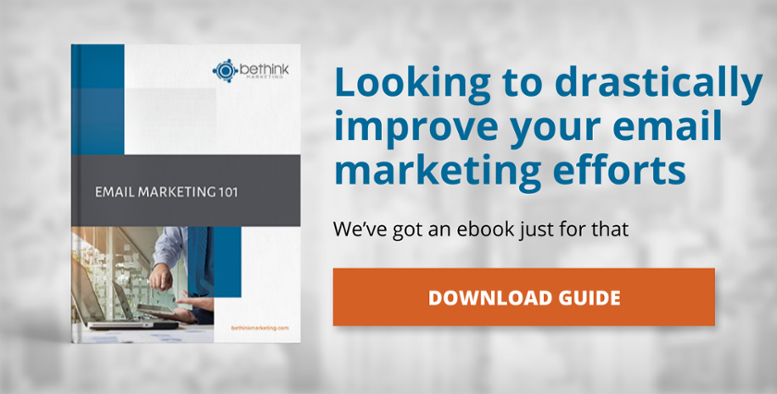
It is quite common to several businesses sending email blasts. This usually means that they send 1 email to all contacts in their database. We see this happening with newsletters or corporate updates. However, email blasts are no longer recommended as they are self-centered, unpersonalized and could be irrelevant to many recipients. Instead, it would be wise to create targeted email lists as one of the email marketing best practices.
In our blog post about optimizing emails for open, we mentioned that email is a customer-centric tool to send relevant and useful content to help them in their journey to finding the right solution to their pain points and challenges. Knowing this, it is crucial to send marketing emails with targeted or segmented lists of contacts.
Segmented lists are created based on a set of criteria from collected data of your contacts. For example, you could create a segment of people who live in a specific jurisdiction and have an annual household income of $250,000. Knowing that there are endless data that could be collected, there are also endless possibilities of segments that you can create.
How is data collected to create segmented lists?
In order to collect data, you need to first have a CRM system that records filled-out forms and customer engagement with your content on social media, your website and your emails. A good CRM will allow you to create segmented lists based on recorded data so that you can send emails that are relevant to the recipients.
Since there are endless segmentation options, we have 6 that we believe could help your financial service firm get started.
Here are 6 targeted email lists to create as a starting point to improve your email marketing efforts.
1. Lifecycle Stage
A lifecycle stage is an indication of where a contact is in the sales and marketing pipeline. Here are the 6 lifecycle stages from HubSpot:
- Subscriber: A prospect who subscribed to your blog or newsletter
- Lead: A prospect who downloaded content from your website
- Marketing Qualified Lead (MQL): A lead who met the set marketing criteria (such as read 5 blog articles or downloaded 2 eBooks) as a qualification to pass the lead on to an advisor.
- Sales Qualified Lead (SQL): A lead who met the set sales criteria (such as budget, urgency, etc.) that is validated by a salesperson by speaking with the lead.
- Opportunity: A lead who has shown a commitment to invest in one of your investment solutions.
- Customer: A lead that made the investment.
As you can see through the definition of each lifecycle stage, the individual’s mindset is different at each one. Sending emails while segmenting based on lifecycle stage could really narrow down what content you should be sending to your contacts to be as relevant as possible.
2. Contact Engagement:
You can segment your contacts based on their engagement with your website or email. Want to send an email to promote a webinar about one of your solutions? How about sending it to those who have already read blog articles about the subject matter? Or how about sending the invitation to those who have previously shown interest and visited your firm’s product page in the past 2 weeks?
3. Demographic
Demographic segmentation is the most common of them all. However, do keep in mind that demographic segmentation could be as wide or as narrow as you’d like it to be, but always refer back to the goal of the email to know what criteria to set. Do you want to send an email to men between the ages of 40 and 55? If so, what specifically would you like these men to have in common?
4. Role-related Segmentation
Let's take financial services for example. People’s role in a position could be a good indicator of their wealth. If you have a fund that you would like to promote only to accredited investors, you can create a segmented list of contacts who have high paying jobs. Or maybe you have a specific fund that is for specific investors based on their role to earn income. Segmenting based on the latter will create some level of personalization in email marketing as well.
5. Buyer Persona
A buyer persona is a semi-fictional representation of your ideal customer. Your Financial service firm may have several. Instead of sending email blasts, consider creating a unique email blast for each buyer persona so that the content you send out can be as relevant as possible for each respectable buyer persona.
6. Budget
In the end, the solutions that you provide require potential customers to have a certain amount of money to purchase from you. No matter how motivated they may be, an individual who does not have the money will not bring you any income. If you have high ticket solutions, you could segment based on their budget so that you make sure that you are eliminating people who cannot afford it while attracting the people who can.
Email marketing is not about the volume of emails that you send out. It’s about delivering the right message to the right people who will take action and help grow your business. When you shift your email marketing to be customer-centric and create segmented lists, your content will resonate much more with your recipients compared to the traditional email blast.


Let Us Know What You Thought about this Post.
Put your Comment Below.